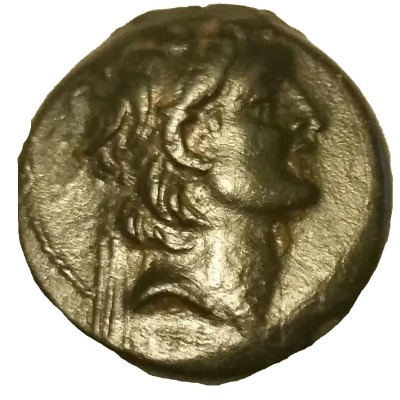


Dichalkon - Alexander Antioch 129 BC - 128 BC
| Bronze | 6 g | 20 mm |
| Issuer | Seleucid Empire (Seleucid Empire (305 BC - 64 BC)) |
|---|---|
| King | Alexander II Zabinas (128 BC - 123 BC) |
| Type | Standard circulation coin |
| Years | 129 BC - 128 BC |
| Value | Dichalkon (1⁄24) |
| Currency | Drachm |
| Composition | Bronze |
| Weight | 6 g |
| Diameter | 20 mm |
| Shape | Round (irregular) |
| Technique | Hammered |
| Orientation | Variable alignment ↺ |
| Demonetized | Yes |
| Updated | 2024-10-10 |
| Numista | N#84459 |
|---|---|
| Rarity index | 85% |
Reverse
Young Dionysos standing left, kantharos in right hand, thyrsos vertical behind in left.
Script: Greek
Lettering: ΒΑΣΙΛΕΩΣ ΑΛΕΞΑΝ∆ΡΟΥ ΕΠΡ Σ
Translation: King Alexander (II, Zabingas)
Edge
Rough
Comment
ΕΠΡ is a date of the Seleucid era expressed in the alphabetic numeration system. The first letter corresponds to the number of unity, the second to the number of the decade and the third to the number of the hundred. Ε means 5, Π means 80 and Ρ means 100. So the complete date means 185 of the seleucid era, which begin in 311 BC. Consequently, this date corresponds to the year 126 BC of your era.Interesting fact
One interesting fact about this coin is that it features a unique blend of Greek and Persian influences in its design. The obverse (front) side of the coin depicts Alexander the Great in a classic Greek profile, while the reverse (back) side features an image of the Persian goddess Artemis. This fusion of cultural styles reflects the multicultural nature of the Seleucid Empire, which was founded by one of Alexander's generals and spanned across a vast territory that included both Greek and Persian lands.



